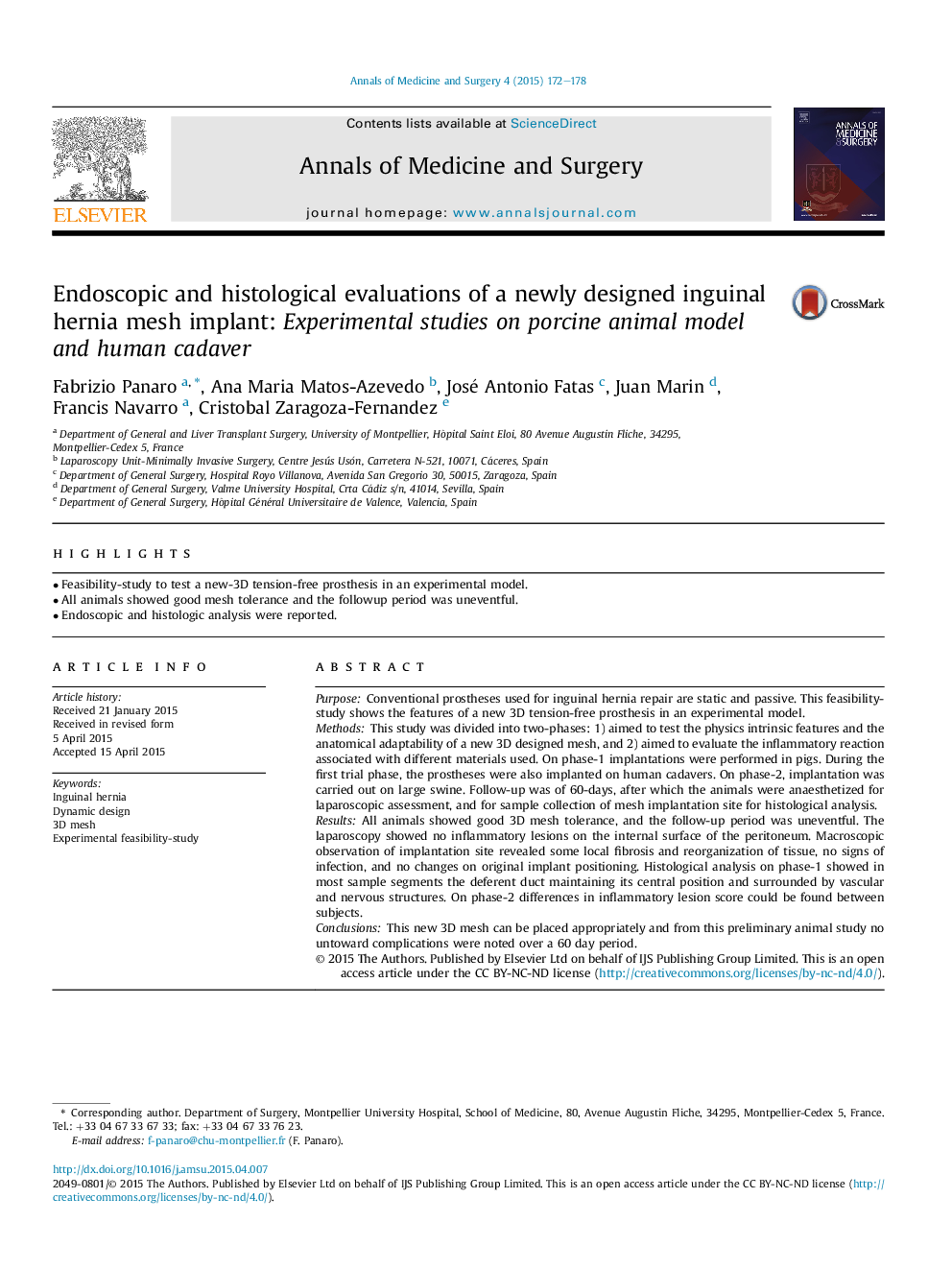| Article ID | Journal | Published Year | Pages | File Type |
|---|---|---|---|---|
| 4195364 | Annals of Medicine and Surgery | 2015 | 7 Pages |
•Feasibility-study to test a new-3D tension-free prosthesis in an experimental model.•All animals showed good mesh tolerance and the followup period was uneventful.•Endoscopic and histologic analysis were reported.
PurposeConventional prostheses used for inguinal hernia repair are static and passive. This feasibility-study shows the features of a new 3D tension-free prosthesis in an experimental model.MethodsThis study was divided into two-phases: 1) aimed to test the physics intrinsic features and the anatomical adaptability of a new 3D designed mesh, and 2) aimed to evaluate the inflammatory reaction associated with different materials used. On phase-1 implantations were performed in pigs. During the first trial phase, the prostheses were also implanted on human cadavers. On phase-2, implantation was carried out on large swine. Follow-up was of 60-days, after which the animals were anaesthetized for laparoscopic assessment, and for sample collection of mesh implantation site for histological analysis.ResultsAll animals showed good 3D mesh tolerance, and the follow-up period was uneventful. The laparoscopy showed no inflammatory lesions on the internal surface of the peritoneum. Macroscopic observation of implantation site revealed some local fibrosis and reorganization of tissue, no signs of infection, and no changes on original implant positioning. Histological analysis on phase-1 showed in most sample segments the deferent duct maintaining its central position and surrounded by vascular and nervous structures. On phase-2 differences in inflammatory lesion score could be found between subjects.ConclusionsThis new 3D mesh can be placed appropriately and from this preliminary animal study no untoward complications were noted over a 60 day period.
